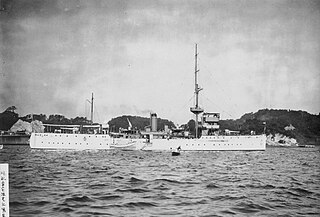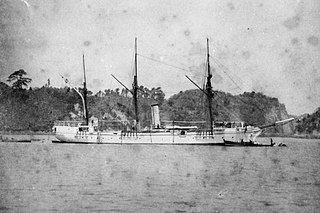 W
WThe No.7-class minesweepers were a class of minesweepers of the Imperial Japanese Navy (IJN), serving during the Second Sino-Japanese War and World War II. Six vessels were built in 1937–1939 under the Maru 3 Keikaku.
 W
WThe No.19 class minesweeper was a class of minesweepers of the Imperial Japanese Navy (IJN), serving during World War II. 70 vessels were planned under the Maru 4 Programme, Maru Kyū Programme and Kai-Maru 5 Programme, however, only 17 vessels were completed.
 W
WAtaka (安宅) was a river gunboat of the Imperial Japanese Navy that operated on the Yangtze River in China during the 1930s, and during the Second Sino-Japanese War.
 W
WThe Azio-class minelayer was a class of six minelayers conceived in 1920 and built between 1924 and 1927 in Italy for the Regia Marina. The ships were conceived for colonial purposes and in this role they spent almost the whole Italian career. Some units were sold to the Bolivarian Navy of Venezuela where they served until their decommissioning and scrapping in the early 1950s.
 W
WBanjō was a steam gunboat, serving in the early Imperial Japanese Navy. The ship was named after a mountain in Shizuoka prefecture
 W
WChiyoda was a gunboat of the Tokugawa Navy, and Japan's first domestically-built steam warship. She was a 3rd class wooden gunboat and laid down May 7, 1861, and launched July 2, 1863 by the shipbuilder, and future industrial giant, Ishikawajima.
 W
WFushimi (伏見) was a river gunboat in the Imperial Japanese Navy, serving in China during the inter-war period.
 W
WHeien , originally known as Pingyuan, built by the Mawei Navy Yard near Foochow (Fuzhou), was an ironclad coastal battleship serving with the Imperial Chinese Beiyang Fleet and later the Imperial Japanese Navy. Previous transliterations of its Chinese name include Ping Yuen and Ping Yuan, also of its Japanese name Heiyen.
 W
WKotaka (小鷹) was a river gunboat of the Imperial Japanese Navy, part of the 11th Gunboat Sentai, that operated on the Yangtze River in China during the 1930s, and during the Second Sino-Japanese War. Participated in the Battle of Wuhan, June-Sept., 1938. Participated in Battle of Madang and Battle of Jiujiang, June, 1938. Nanchang Campaign: February–May, 1939. 1942: In service as passenger ship. Sunk May 31, 1944 on the Yangtze River while serving as a communications ship. The IJN official designation was 60-ton traffic ship .
 W
WThe Kozakura-class traffic boat was a class of motor gunboat of the Imperial Japanese Navy, serving from the 1930s to World War II. The IJN official designation was 30-ton traffic boat .
 W
WThe first USS Luzon (PG-47) was laid down 20 November 1926 by the Kiangnan Dock and Engineering Works, Shanghai, China; launched 12 September 1927; sponsored by Miss Mary C. Carter, daughter of Commander Andrew F. Carter, USN; and commissioned 1 June 1928.
 W
WŌshima (大島) was a steam gunboat, serving in the early Imperial Japanese Navy. She was named after the island of Ōshima off Shizuoka prefecture.
 W
WSaga (嵯峨) was a river gunboat of the Imperial Japanese Navy, that operated on the Yangtze River and in coastal waters of China during the 1930s, and during the Second Sino-Japanese War and World War II.
 W
WHMS Moth was an Insect-class gunboat of the Royal Navy. Entering service in 1916, Moth had a varied career with service in the Middle East, the White Sea and the Far East in two world wars. Scuttled in World War II during the invasion of Hong Kong, the ship was raised and put into service by the Imperial Japanese Navy as Suma (須磨). The ship remained active throughout the war, before striking a naval mine in the Yangtze River in 1945 and sinking.
 W
WHMS Moth was an Insect-class gunboat of the Royal Navy. Entering service in 1916, Moth had a varied career with service in the Middle East, the White Sea and the Far East in two world wars. Scuttled in World War II during the invasion of Hong Kong, the ship was raised and put into service by the Imperial Japanese Navy as Suma (須磨). The ship remained active throughout the war, before striking a naval mine in the Yangtze River in 1945 and sinking.
 W
WSumida (隅田) was a river gunboat in the Imperial Japanese Navy. It was named after the Sumida River in Tokyo, Japan.
 W
WUSS Wake (PR-3) was a United States Navy river gunboat operating on the Yangtze River, that was captured by Japan on 8 December 1941.
 W
WToba (鳥羽) was a river gunboat of the Imperial Japanese Navy, part of the 11th Gunboat Sentai, that operated on the Yangtze River in China during the 1930s, and during the Second Sino-Japanese War and World War II.
 W
WTsao Kiang was a 640-ton wooden gunboat, launched in 1869 by Jiangnan Shipyard, Shanghai, for the Nanyang Fleet. Acquired in 1872 for Zhili Province by Li Hongzhang the ship served with Beiyang Fleet as a governor's yacht.
 W
WUji (宇治) was an early steam gunboat, serving in the Imperial Japanese Navy. She was named after the city of Uji in Kyoto prefecture. She should not be confused with the later World War II period Hashidate-class Uji with the same name
 W
WUn'yō was an iron-ribbed, wooden-hulled sail-and-steam gunboat of the early Meiji period, serving with the fledgling Imperial Japanese Navy. She was a two-masted brig with an auxiliary coal-fired steam engine driving a single screw.
 W
WUSS Wake (PR-3) was a United States Navy river gunboat operating on the Yangtze River, that was captured by Japan on 8 December 1941.